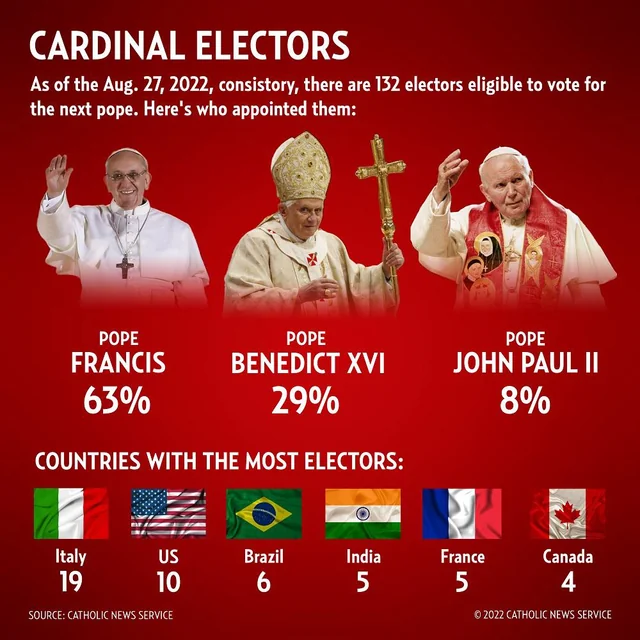The number of cardinal electors and the rules surrounding them have evolved over time. Here’s a breakdown of when Popes increased the number, often citing the desire to include all eligible cardinals in consistories:
Pope Paul VI: He significantly increased the size of the College of Cardinals. In 1970, he also introduced a rule limiting the eligibility to vote in a conclave to cardinals under the age of 80. Then, in 1975, he set a maximum number of 120 cardinal electors. However, even during his pontificate, this number was exceeded temporarily.

Pope John Paul II: While he reaffirmed the limit of 120 cardinal electors in 1996, his appointments led to the number exceeding 120 in four of his nine consistories. The number of electors reached a high of 135 in both 2001 and 2003. He approved “temporary derogations” to allow all under-80 cardinals to participate in consistories as electors when the limit was exceeded.
Pope Benedict XVI: He generally adhered more closely to the limit but also exceeded it, reaching a high of 125 cardinal electors in 2012.
Pope Francis: He has consistently exceeded the limit of 120 cardinal electors in all ten of his consistories. As of December 2024, the number reached a record high of 140.
There are currently a total of 252 cardinals, but only 135 are eligible to elect the successor to Pope Francis.
cover image: © Mazur/cbcew.org.uk

